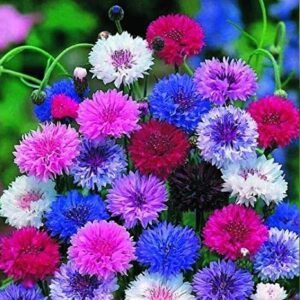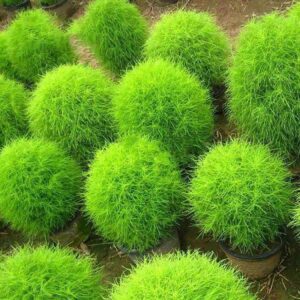
Are you ready to bring a touch of charm and elegance to your garden? Cornflowers, also known as bachelor’s buttons, are the perfect choice! With their delicate petals and vibrant hues, cornflowers add a splash of color and whimsy to any outdoor space. Whether you’re an experienced gardener or just starting out, this guide will help you grow cornflower seeds successfully and enjoy a garden filled with beauty and joy.
Selecting the Seeds

Start your cornflower-growing journey by selecting the right seeds. Cornflowers come in various colors, including shades of blue, pink, purple, and white. Consider the color palette of your garden and choose seeds that will complement your existing plants or create a stunning focal point. Look for high-quality seeds from reputable suppliers to ensure healthy and robust plants.
Preparing the Soil

Cornflowers thrive in well-drained soil with plenty of sunlight. Prepare your planting area by removing any weeds and loosening the soil to a depth of about 6-8 inches. Incorporate organic matter such as compost or aged manure to improve soil fertility and texture. Cornflowers are adaptable to different soil types but prefer slightly alkaline soil with a pH around 6.0-7.0.
Planting the Seeds

Once the soil is prepared, it’s time to plant your cornflower seeds. Sow the seeds directly into the soil at a depth of about ¼ inch. Space the seeds evenly apart, allowing about 6-12 inches between each seedling to give them room to grow. Gently pat down the soil to ensure good seed-to-soil contact, and water the area lightly to settle the seeds in place.
Providing Care and Maintenance

Cornflowers are relatively low-maintenance plants but benefit from regular care to thrive. Water the plants consistently, keeping the soil evenly moist but not waterlogged. Avoid overhead watering, as wet foliage can increase the risk of fungal diseases. Fertilize the cornflowers lightly with a balanced fertilizer once or twice during the growing season to promote healthy growth and abundant flowering.

Protecting Against Pests and Diseases

While cornflowers are generally resistant to pests and diseases, they can sometimes encounter problems such as aphids, slugs, and powdery mildew. Monitor the plants regularly for signs of pest infestation or disease, and take appropriate action to address any issues. Use insecticidal soap or neem oil to control aphids and other pests, and remove affected leaves or plants to prevent the spread of disease.
Harvesting and Enjoying Your Blooms

As your cornflower plants mature, you’ll be rewarded with a profusion of colorful blooms that brighten up your garden and attract pollinators such as bees and butterflies. Harvest flowers regularly to enjoy them in floral arrangements or simply admire their beauty in the garden. Cornflowers also make lovely additions to dried flower arrangements and craft projects, preserving their beauty for months to come.
Conclusion

Growing cornflower seeds is a delightful and rewarding experience that brings beauty and joy to any garden. By following the steps outlined in this guide and providing care and attention to your plants, you can enjoy a garden filled with vibrant cornflower blooms that uplift the spirit and enchant the senses. Whether you’re planting cornflowers in flower beds, borders, or containers, these charming flowers are sure to bring smiles and happiness to all who encounter them. So roll up your sleeves, dig in the dirt, and watch as your cornflower garden flourishes and thrives. Happy gardening!

Hudgle Corn Flower- Frosty second mix Terrace Garden Flower Seeds For Home Terrace Gardening Plants Garden [Home Garden Seeds Eco Pack] Plant Seeds Pack of 20 Seeds
About this item
- Pack of 20 Seeds
- Best for garden or terrace gardening
- Easy to Grow – Can be grown in indian climate/weather conditions. Do not use for food, feed, or oil purposes, Seeds are only for Agriculture and plantaion purpose
- Best Suitable for Terrace Gardening, Grow bag cultivation, Kitchen Gardening, Terrace Gardening and Roof Top Balcony Gardening
- A Quality Product from Hudgle
Read More…. How to Successfully Grow Pancy Flower Seeds 2024



